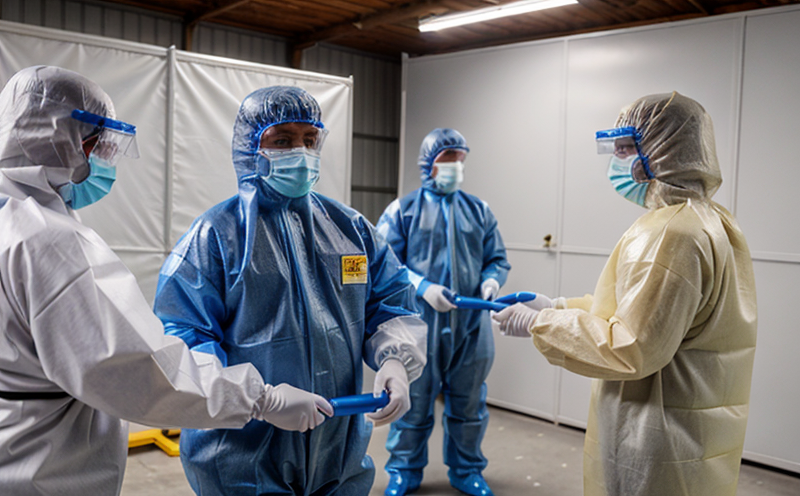GB T 24543 Resistance to infective agents Testing of clothing
The GB/T 24543 standard outlines a stringent protocol for evaluating the resistance of protective clothing against infective agents. This testing is critical in ensuring that workers in high-risk environments are adequately protected from infectious diseases and pathogens. The primary objective of this service is to assess the integrity and effectiveness of textiles used in personal protective equipment (PPE) by simulating real-world exposure scenarios.
The testing process involves exposing specimens of clothing material to various infective agents under controlled conditions, then evaluating their ability to retain these agents. This ensures that the garments maintain a barrier between the wearer and potential contaminants, thereby protecting against the transmission of pathogens.
GB/T 24543 is particularly relevant for industries such as healthcare, emergency services, and laboratory settings where personnel are exposed to infectious materials on a regular basis. The test parameters include exposure time, agent concentration, and temperature, which must be carefully controlled to reflect actual working conditions accurately.
The process begins with thorough specimen preparation, ensuring that the fabric is representative of the material used in the final product. Specimens are then subjected to a series of tests designed to mimic real-world scenarios, including exposure to blood, bodily fluids, and other infectious agents. The results provide valuable insights into the performance of protective clothing under various conditions.
The testing apparatus used adheres strictly to international standards such as ISO 16600-2:2015 for blood-borne pathogen resistance tests. This ensures that the testing process is consistent and reliable, producing accurate and repeatable results. The acceptance criteria are based on the ability of the garment to maintain a barrier against infective agents without compromising comfort or fit.
To ensure consistency across different laboratories, all tests conducted under this standard follow strict protocols outlined in GB/T 24543. This includes detailed procedures for specimen preparation, exposure conditions, and evaluation methods. The results are reported comprehensively, detailing the performance of each garment sample against predefined criteria.
Real-World Applications
In healthcare settings, protective clothing is often in direct contact with patients who may be infected with contagious diseases. Ensuring that this equipment provides adequate protection can significantly reduce the risk of occupational exposure for medical professionals. In emergency services and laboratory environments, similar considerations apply to protect personnel from potentially harmful substances.
| Industry | Potential Infective Agents | Testing Parameters |
|---|---|---|
| Healthcare | Bloodborne pathogens, bodily fluids | Exposure time, temperature, agent concentration |
| Emergency Services | Bodily fluids, hazardous chemicals | Exposure duration, temperature control |
| Laboratory Settings | Biological hazards, chemical agents | Testing conditions, material integrity assessment |





